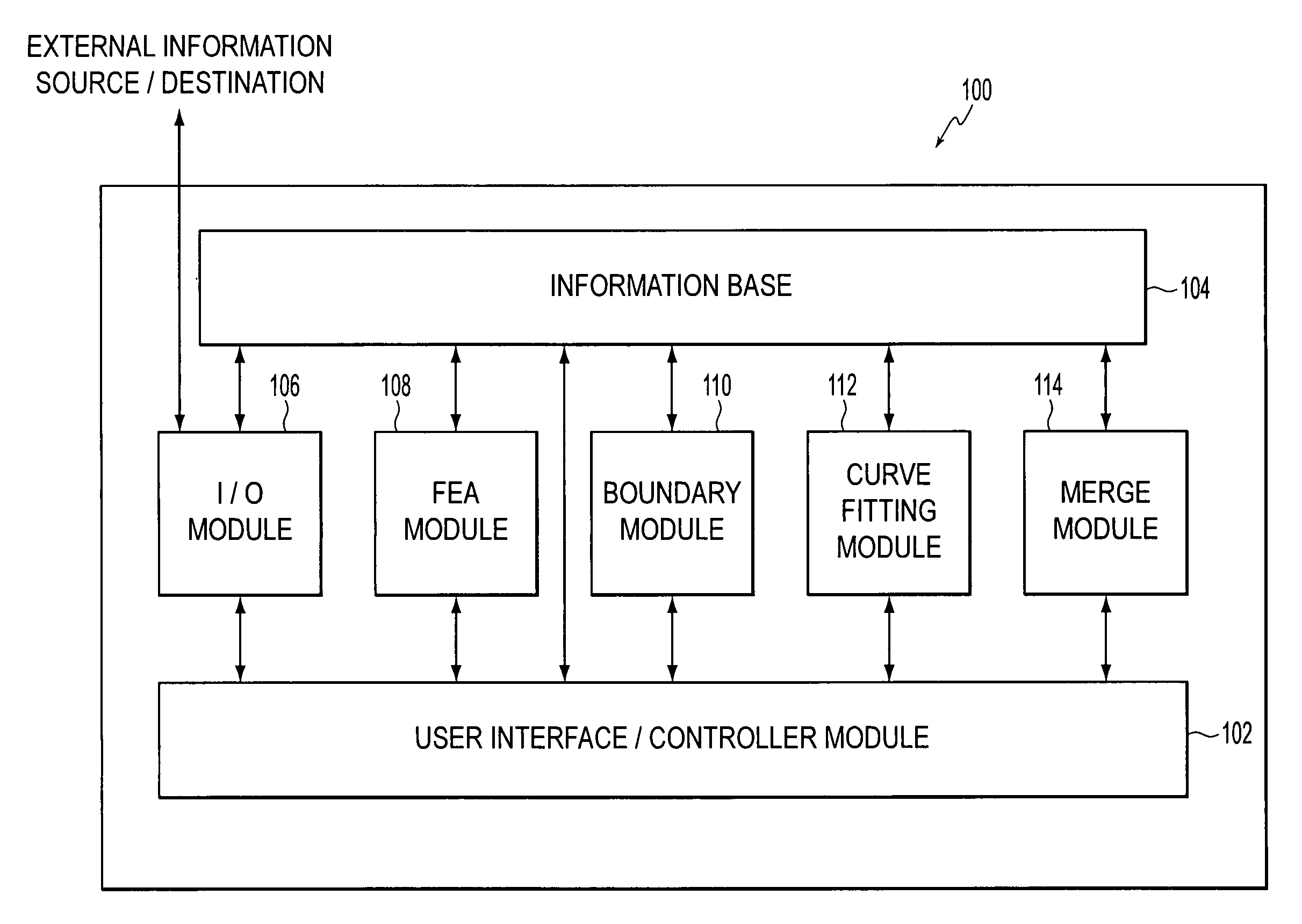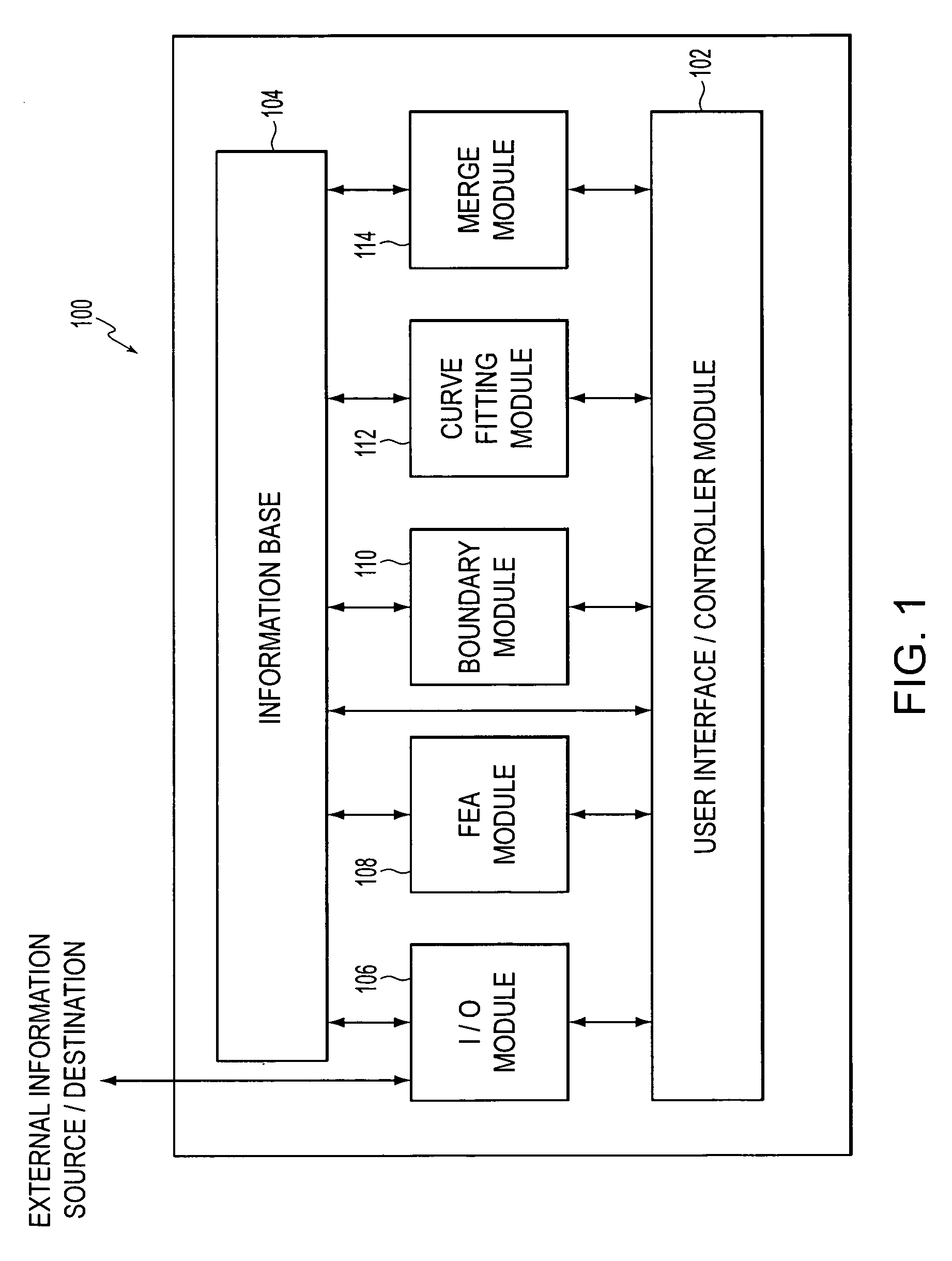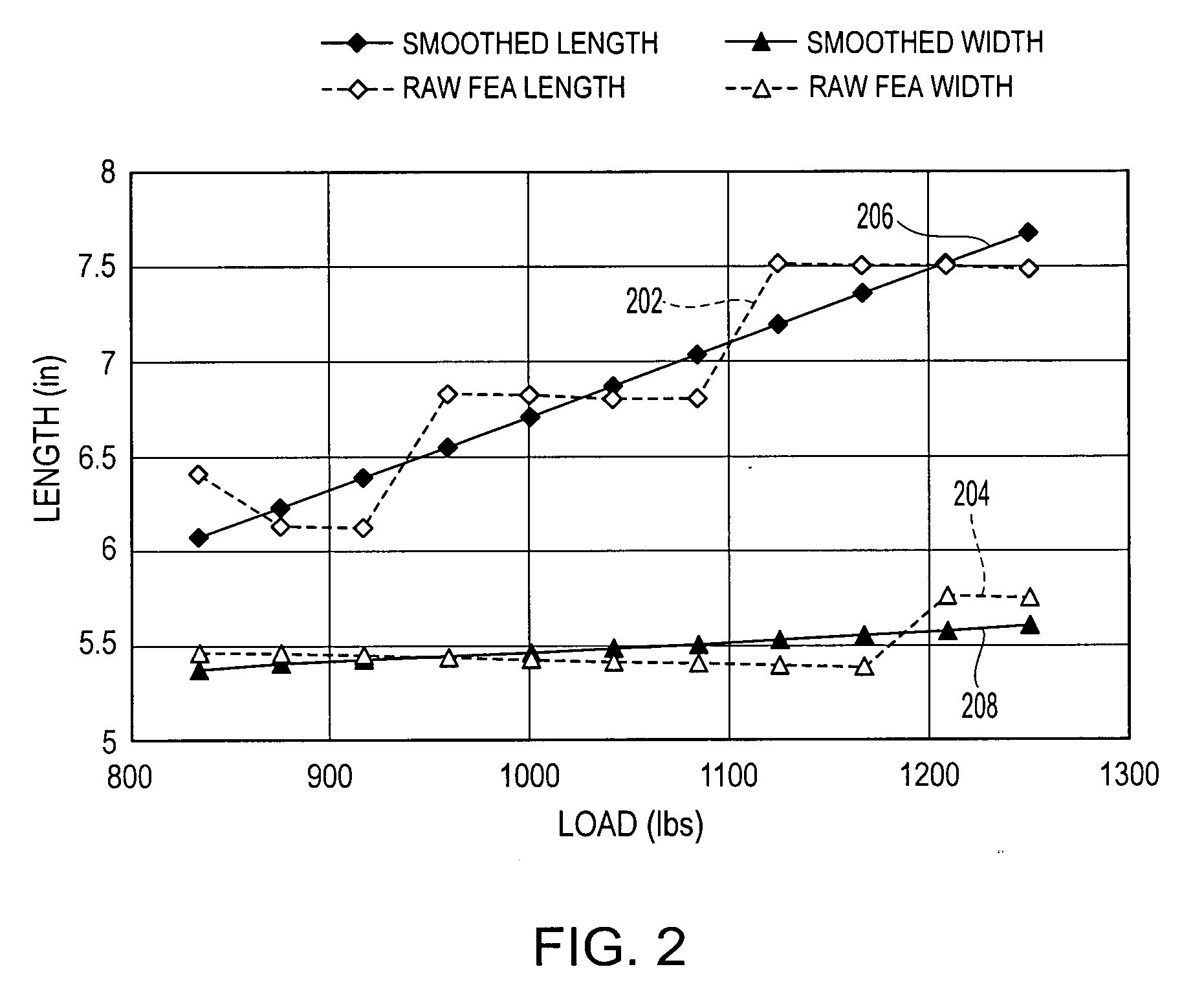Finite element analysis tire footprint smoothing algorithm using multiple load cases
a technology of tire footprint and load case, applied in the field offinite element analysis, can solve the problems of increasing the resolution of fea mesh, processing time, processing resources (e.g. dynamic memory, processing cycles, etc.), and the processing time required, so as to improve the accuracy and resolution of simulated contact shape boundaries.
- Summary
- Abstract
- Description
- Claims
- Application Information
AI Technical Summary
Benefits of technology
Problems solved by technology
Method used
Image
Examples
Embodiment Construction
[0023] Exemplary embodiments according to the present invention are described below with reference to the above drawings, in which like reference numerals designate like components.
[0024] Exemplary embodiments of the present invention relate to a novel method and apparatus for predicting the shape of a contact region of a finite element model deformed against a contact surface.
[0025]FIG. 1 presents a block diagram of a representative finite element analysis (FEA) processing system 100 that includes the contact region boundary prediction capabilities of the present invention. As shown in FIG. 1, FEA system 100 may include a user interface / controller module 102 in communication with an information base 104. FEA system 100 may further include an input / output (I / O) module 106, an FEA module 108, a boundary module 110, a curve-fitting module 112 and a merge module 114. Each of these modules may communicate with information base 104, either directly or via user interface / controller modu...
PUM
 Login to View More
Login to View More Abstract
Description
Claims
Application Information
 Login to View More
Login to View More - R&D
- Intellectual Property
- Life Sciences
- Materials
- Tech Scout
- Unparalleled Data Quality
- Higher Quality Content
- 60% Fewer Hallucinations
Browse by: Latest US Patents, China's latest patents, Technical Efficacy Thesaurus, Application Domain, Technology Topic, Popular Technical Reports.
© 2025 PatSnap. All rights reserved.Legal|Privacy policy|Modern Slavery Act Transparency Statement|Sitemap|About US| Contact US: help@patsnap.com



